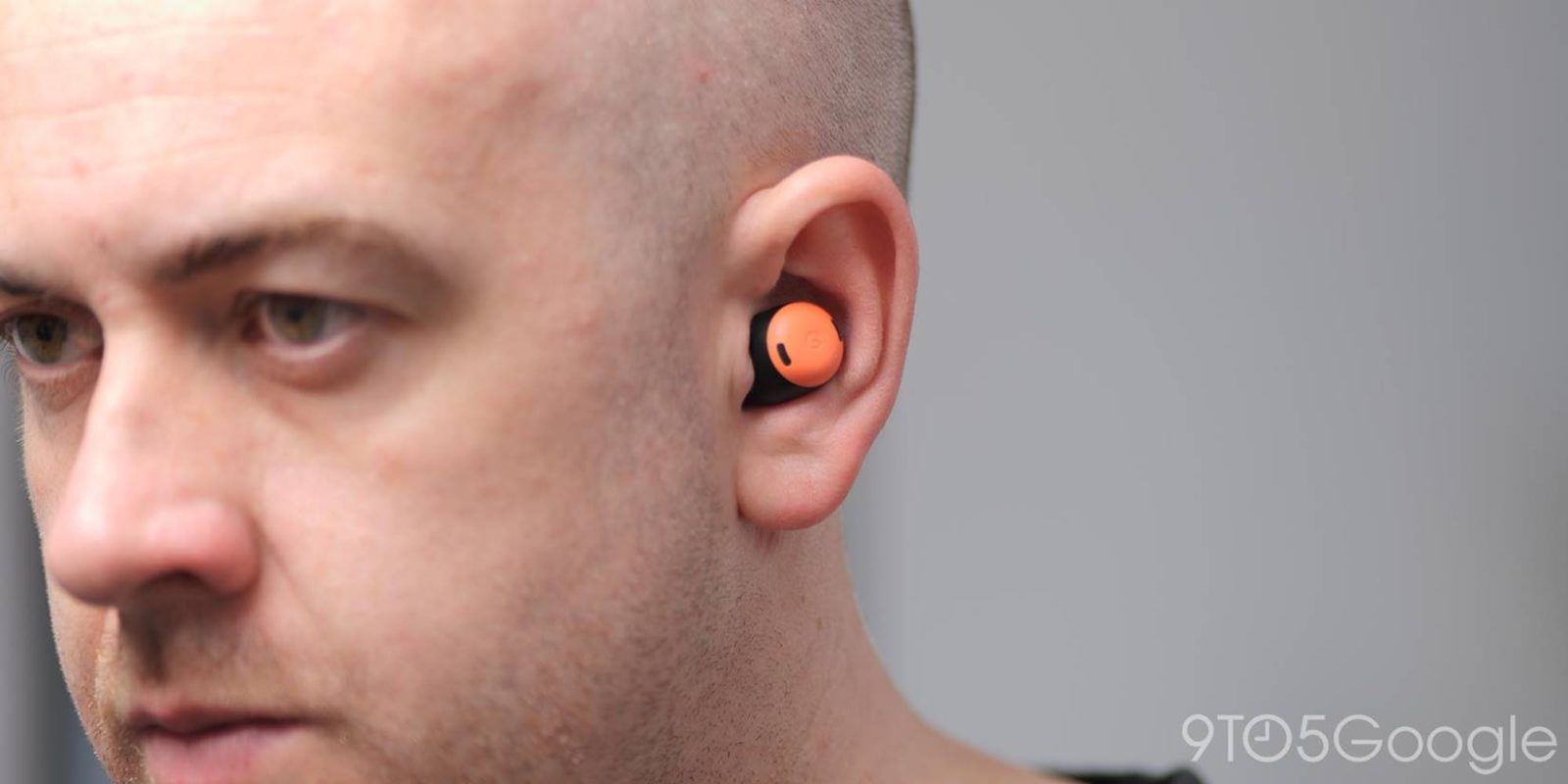
I tried out the new head tracking Spatial Audio feature of the Pixel Buds Pro, and came away impressed yet confused.
Loosely in sync with the March Pixel Feature Drop, Google has launched a new firmware update for the Pixel Buds Pro which enables an optional feature called “head tracking.” As the name suggests, it builds on the Spatial Audio feature of Pixel phones that launched widely earlier this year, allowing the Pixel Buds Pro to know roughly which way your head is facing.
In theory, this is meant to make your favorite media — movies, games, TV, and eventually music — more immersive, as adjusting your position will adjust the audio effect. Whether it has succeeded in that mission is something you’ll likely need to decide for yourself, but here are my impressions from a few initial hours.
Right off the bat, you need to know that to use Spatial Audio — with or without head tracking — with the Pixel Buds Pro, you need to be using a flagship-level Pixel 6 or newer. I tested connecting the earbuds to a Samsung Galaxy Tab S7 and found the features to be missing altogether.
More than likely, your first experience with head tracking Spatial Audio will come from within the official app for the Pixel Buds Pro. In the same menu where you can toggle head tracking on and off, there is a fun little demo video filled with the sounds of nature.
As this is a controlled environment, the audio engineers responsible for this video pulled out all the stops to make this sound incredible. You can pick out precisely where a particular sound is coming from, be it a bird call, rushing brook, or snorting animal. By turning your head to one side or the other, you can hear each sound move either closer or farther in real time.
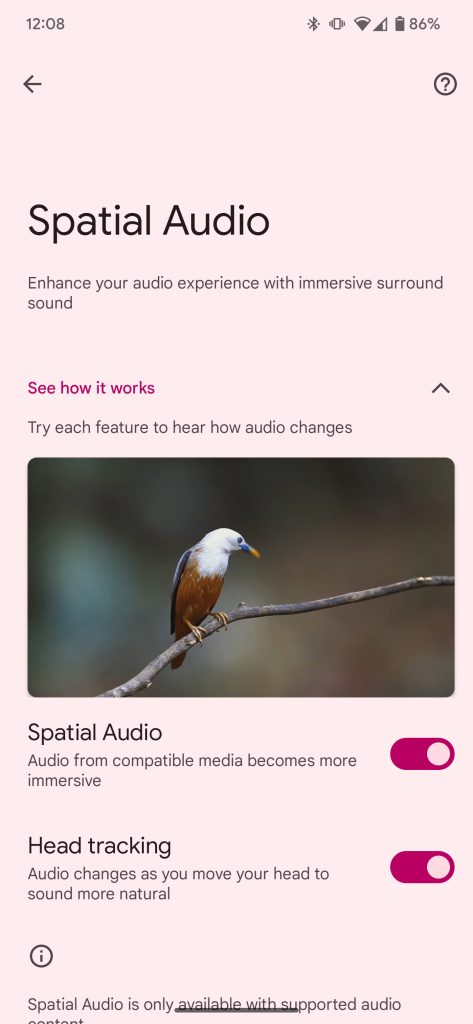
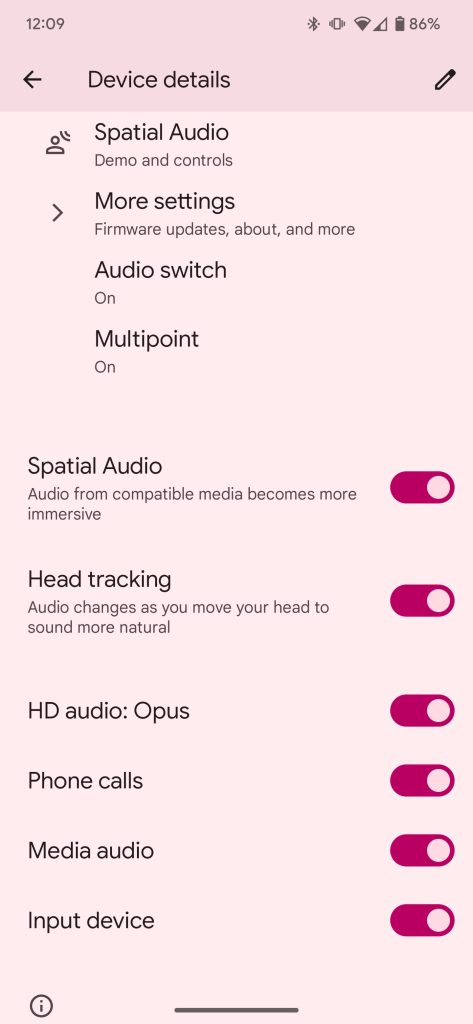
If this is what Spatial Audio was truly like the majority of the time, we would all be in for an interesting treat for the ears. But again, this is an over-the-top tech demo, built to make the effect obvious. It’s no different than the cheap in-your-face gimmicks employed by 3D movies in the 1980s. With that in mind, let’s move on to real world testing.
To make Spatial Audio of any kind possible on the Pixel Buds Pro — and on Android in general — you’ll need to be listening to something in surround sound to add audio from additional directions versus standard stereo. This is actually the first hurdle I came across, as you need to find something with traditional surround sound — but not Dolby Atmos.
Most video streaming apps on Android support this already, while the few music apps that claim to have “Spatial Audio” (like Tidal and Apple Music) only do so through Dolby Atmos, which the Pixel series does not support. The most laughable exclusion is YouTube, which does not support any kind of surround sound outside of purchases and YouTube TV streams.
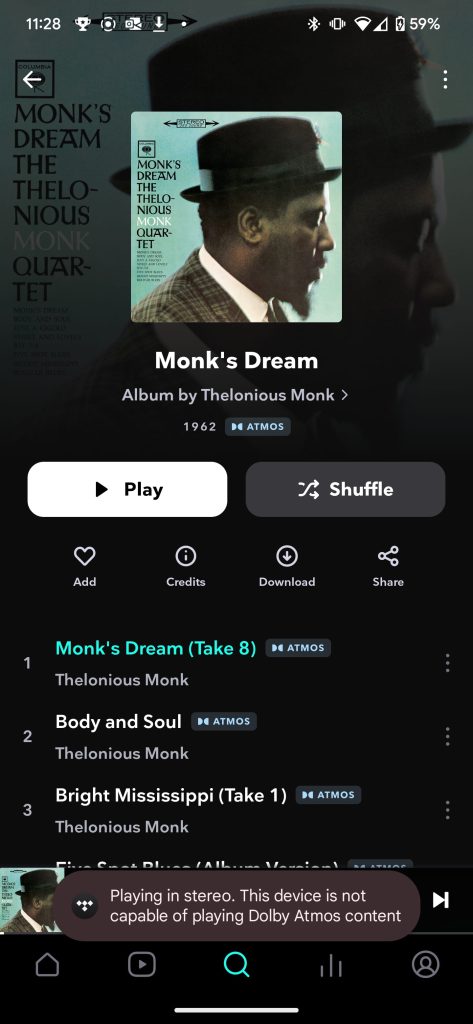
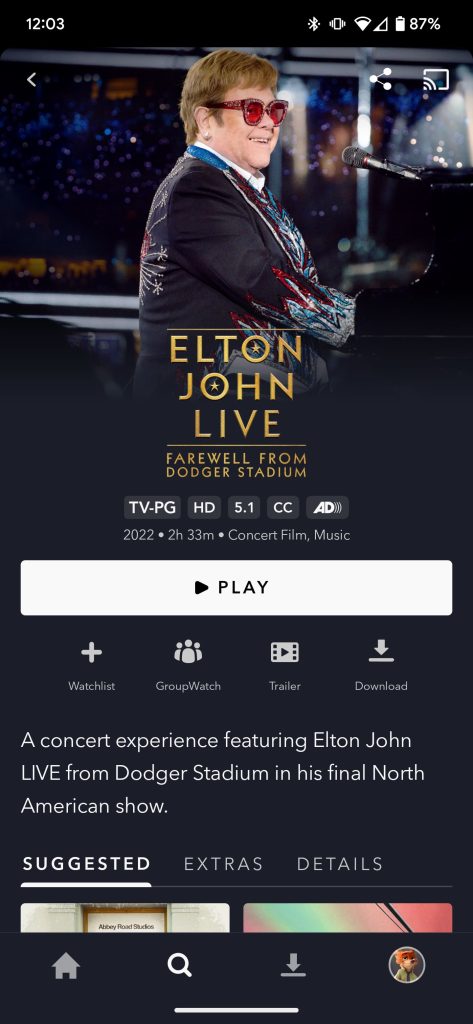
Deciding to let my love of music shine through, I settled in for the Elton John concert film on Disney+, which indeed had 5.1 surround available.
On its own, the effect of enabling Spatial Audio is difficult to describe. Where the Pixel Buds Pro normally have a tight soundstage, with music sounding like it’s coming from inches away from your head, Spatial Audio roughly doubles that distance — an improvement, at the least. This is achieved with a heaping dose of reverb, among other effects. Any time I would pause the video, I could hear the final note bounce for an extra moment, which was a bit jarring but also not unwelcome.
For the sake of listening to music, I’m actually not a fan of Google’s Spatial Audio effect in general (beyond just on the Pixel Buds Pro), as I immediately noticed a drop in the audio’s richness. The entire mid-range is dampened, which made Elton John’s piano less of a delight to listen to, by direct comparison to simple stereo audio.
What really changes things, of course, is the head tracking. As I turned my head from side to side, the sound of the stage would move with it, in sync. For the most part, this happened quickly and with a smooth transition, though a few times while walking around I ended up with the audio playing in the wrong direction. These issues always corrected themselves in a matter of seconds, thankfully, by shifting the sound to make my current direction the new center.
Unfortunately, whether facing the “wrong way” by choice or by accident, I was confronted with the most glaring issue of head tracking Spatial Audio as it exists today — there’s nothing happening in most any other direction. Any time I faced away from the stage, I ended up tuning out the main show and tuning in random ambient noise.
In my personal ideal scenario, listening to a concert in Spatial Audio with head tracking would allow you to turn in different directions to listen more closely to one instrument or another, but the Pixel Buds Pro are currently limited to media with surround sound, which was likely tuned for a home theater, not 360° listening.
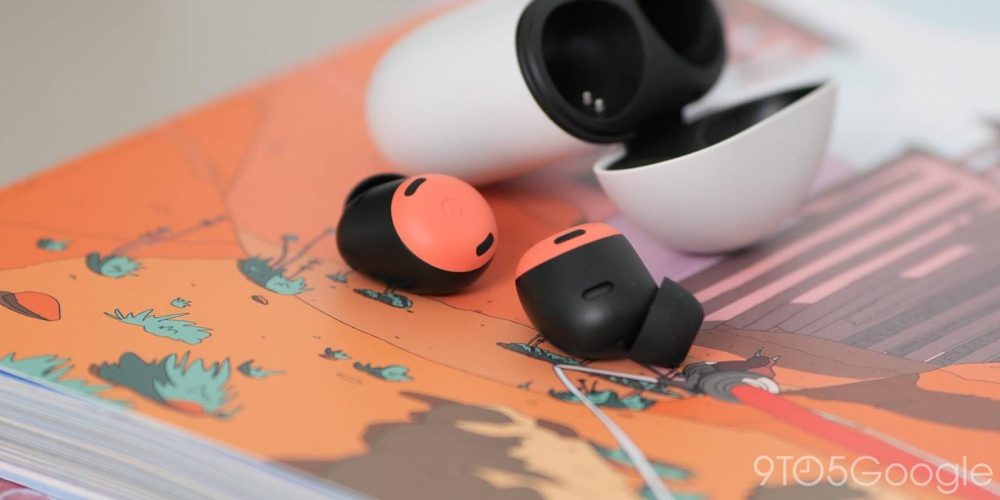
To make sure this wasn’t a one-off issue with listening to a concert film, I jumped into other films and TV series to test more examples. In some cases, Spatial Audio made things worse, making some TV shows seem downright hollow. In others, I was thoroughly impressed with the way that certain audio cues followed my head movements.
In doing these tests though, swiveling my neck left and right like a strange owl, I was confronted with the pure impracticality of the Pixel Buds Pro getting head tracking for Spatial Audio. I’m simply not likely to turn my head very much while watching something on my phone screen right in front of me. If I look far off to the right to catch a different audio cue, I’m missing the action on the screen.
Instead, surely this variety of Spatial Audio is intended for new experiences that aren’t necessarily tied to your phone screen. This could take the form of concert recordings with intentionally placed instruments, a podcast mix where it sounds like the hosts are there with you in the room, a dramatically depicted audiobook, or even — as Google has proven — relaxing nature sounds.
As it stands today, though, this content simply doesn’t exist or is not easy to find on Android, leaving Spatial Audio in an awkward spot.
No matter how I look at it, or from what direction I listen to it, adding head tracking to the Pixel Buds Pro is simply a gimmick, even if it is an impressively built one.
More on Pixel:
- March 2023 Pixel Feature Drop changelog leaks out
- Pixel Buds Pro and A-Series may soon be available in ‘Sky Blue’ to complement Pixel 7a [Gallery]
- Here’s another screenshot from the Pixel Tablet
FTC: We use income earning auto affiliate links. More.


Comments